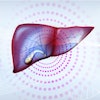
Survey data has revealed a knowledge gap among physicians regarding interventional radiology (IR) as a specialty, according to a recent study published in Clinical Imaging.
A team at Brigham and Women's Hospital in Boston surveyed orthopedic surgeons, physiatrists, and rheumatologists in their 14-hospital system. While most physicians rated their knowledge of image-guided procedures as excellent or good, most did not know that IR is a distinct specialty, they reported.
"In order for [interventional radiologists] to grow their practice and build referrals for novel [musculoskeletal] IR procedures, it is important to understand the knowledge of subspecialists treating these conditions and their referral patterns," wrote first author Sukjin Koh, MD, and colleagues.
IR procedures continue to increase in scope, especially with evidence supporting effective new treatments to treat knee pain or frozen shoulder, for instance. As a result, specialists treating various musculoskeletal ailments may not be fully aware of the spectrum of interventions that IR can offer, the authors explained.
Thus, to identify areas where referring physicians can be educated and identify barriers to referral, the researchers surveyed 303 orthopedic surgeons, rheumatologists, and physiatrists, with 59 participants completing a 17-question survey. Questions concerned demographics, practice environment, awareness of IR, referral patterns, and knowledge of image-guided musculoskeletal interventions.
Most respondents were attending physicians 55 (93%) and four (7%) were resident physicians. Respondents were 40% orthopedists, 36% physiatrists, and 24% rheumatologists.
A minority of survey respondents (17%) recognized the IR as a distinct specialty of medicine as designated in 2012 by the American Board of Medical Specialties, according to the findings. When queried specifically about IR procedures for adhesive capsulitis (frozen shoulder), 24% selected genicular artery embolization, and 31% selected embolization.
Barriers to IR referral for these procedures were as follows, according to the study:
- Twenty-one percent of specialists performed the procedure.
- Seventeen percent listed electronic medical record (EMR) challenges.
- Fourteen percent reported scheduling difficulties.
- Thirteen percent reported no barriers.
- Eleven percent reported difficulty consulting.
- Eleven percent referred cases to another specialty.
- Ten percent did not have enough knowledge of image-guided procedures.
- Three percent reported the procedure is not performed by an interventional radiologists or musculoskeletal radiologist.
In addition, a majority of respondents had six or more years in practice and reported learning the most about the services that IR provides in residency or fellowship. Thus, it is possible that respondents did not have education or awareness of the specialty status that IR achieved in 2012, the group noted.
Ultimately, the authors suggested the following actions for improving collaboration among IR specialists and physicians:
- Engage with referring physicians to improve awareness of services provided by the interventional practice.
- Collaborate with administrators to streamline ordering of referrals or consultations in the EMR.
- Highlight literature on novel and promising interventions that address the needs of the patient population served by the referring services.
"Raising physician awareness of the IR specialty and the services provided by IR is critical to building clinical relationships for [musculoskeletal] interventions," the authors concluded.
The article was published on July 16 in Clinical Imaging.




















